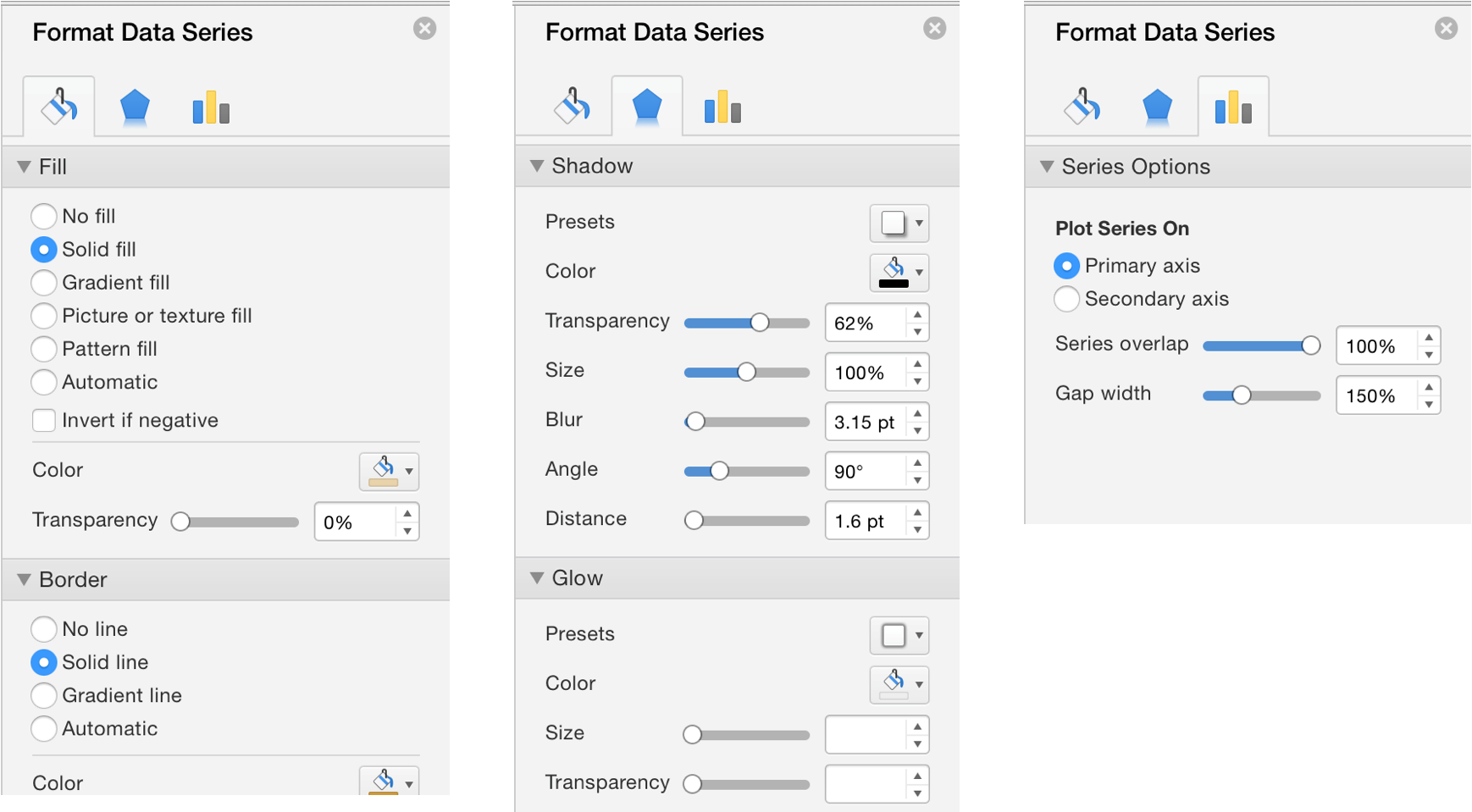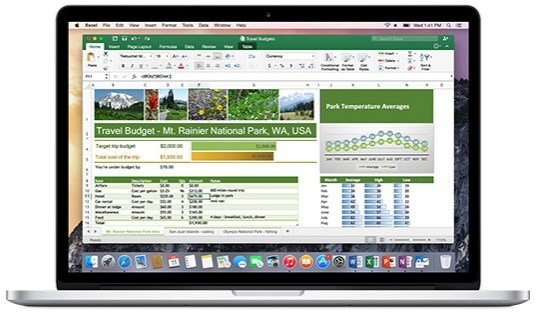Microsoft 365 includes premium Word, Excel, and PowerPoint apps, 1 TB cloud storage in OneDrive, advanced security, and more, all in one convenient subscription. With Microsoft 365, you get features as soon as they are released ensuring you’re always working with the latest. Create, view, edit, and share your spreadsheets using Excel for Mac. Office Suite Software 2020 Microsoft Word 2019 2016 2013 2010 2007 365 Compatible CD Powered by Apache OpenOffice for PC Windows 10 8.1 8 7 Vista XP 32 64 Bit & Mac -No Yearly Subscription PC/Mac.
Excel 2013 is a powerful spreadsheet program designed for professional use across a range of industries. The program is part of the larger Microsoft Office package. That means it is easy to import and export data between other Microsoft programs such as Word or PowerPoint. Excel 2013 allows you to enter rows and columns of data on a large grid. You can record nearly any type of data from numbers to text strings and images. You can arrange the data in nearly any format and color. The spreadsheet can be used to track lists or to generate complicated reports.
The real power of comes from the ability to dynamically analyze, change or calculate data in a spreadsheet. Users are able to create very complicated equations within the program. Those equations can do things such as sort lists, add numbers together and perform basic logical functions. The equations can be applied to a single cell, an entire row or the whole spreadsheet depending on the needs of the user. Multiple equations can be stacked in order to do sophisticated accounting or scientific tasks. There are very few limits to what can be done with the equations in Excel 2013.
Another incredibly useful feature in Excel 2013 is the ability to generate a wide range of reports from the data in the spreadsheet. There are dozens of different report options from creating a pivot table to making a simple pie chart. You are able to define exactly what data to use in the report and how to arrange it. You can customize nearly every part of a report to meet your needs. You could even potentially generate a full report by hand instead of relying on the automated wizard in the program.
Excel 2013 introduced a new feature known as flash fill. This feature attempts to intelligently sort data in a way that makes sense to people. You can import or paste in a large amount of unsorted data. Excel will go through looking for patterns or similarities between various data fields. It will then sort the data into rows and columns. This feature can make organizing data from many different disparate programs simpler and faster. The flash fill feature does not always work correctly although it can really save a large amount of time when it does.
The basic interface for Excel 2013 has been upgraded from previous versions to be easier to use. The often complicated menu bars at the top of the application have been replaced with a ribbon. The ribbon allows you to see all of the functions available grouped by various categories. The visual representation of the different functions makes it much easier to identify what you are looking for instead of having to sort through endless nested menus. This can actually improve productivity.
One drawback of Excel 2013 is that it can be very intimidating to anyone who is just learning to use the program. The sheer number of specialized features and options can be overwhelming at first. That sometimes drives people away from learning how to use all of the functions within the spreadsheet. Excel 2013 is widely recognized as the best spreadsheet application available today. It is commonly used in businesses of all sizes to do anything from creating invoices to managing employee schedules.
Pros
- Incredibly powerful feature set
- Full integration with Microsoft Office applications
- Automated wizards to make performing tasks easier
Cons
- Can be complicated to use
- Some options and features are confusing
Note
Office 365 ProPlus is being renamed to Microsoft 365 Apps for enterprise. For more information about this change, read this blog post.
Symptoms
When you try to start Microsoft Excel for Mac, you receive the following error message:
Microsoft Excel has encountered a problem and needs to close. We are sorry for the inconvenience.

Cause
This error may occur if one of the following conditions is true:
- The Excel preferences are corrupted.
- Programs that are running in the background are interfering with Excel for Mac.
- Application files are corrupted.
- A user account profile is corrupted.
Resolution
To resolve this issue, try the following methods, in order, until the issue is resolved.
Method 1
Step 1: Quit all programs
You must quit all programs before you continue. To quit an application, select the application on the toolbar (top), and then select Quit. If you cannot quit an application or do not know how, hold down the Command and Option keys, and then press Esc on your keyboard. Select the application in the 'Force Quit Application' window, and then select Force Quit. Click Force Quit to quit the application.
When you are finished, click the red button in the upper-left corner and go to step 2.
Step 2: Remove your Excel preferences
Quit all Microsoft Office for Mac applications.
On the Go menu, click Home.
Open Library. Note The Library folder is hidden in Mac OS X Lion. To display this folder, hold down the OPTION key while you click the Go menu.
Open Preferences.
Drag com.microsoft.Excel.plist to the desktop. If you cannot locate the file, Excel is using the default preferences. Go to step 7.
Open Excel, and check whether the problem still occurs. If the problem still occurs, quit Excel, restore the file to its original location, and go to the next step. If the problem is resolved, drag com.microsoft.Excel.plist to the Trash.
Quit all Office for Mac applications.
On the Go menu, click Home.
Open Library.
Note
The Library folder is hidden in Mac OS X Lion. To display this folder, hold down the OPTION key while you click the Go menu.
Open Preferences.
Open Microsoft, and then drag com.microsoft.Excel.prefs.plist to the desktop. If you cannot locate the file, Excel is using the default preferences. Go to step 13.
Open Excel, and check whether the problem still occurs. If the problem still occurs, quit Excel, restore the file to its original location, and go to Method 2. If the problem is resolved, drag com.microsoft.Excel,prefs.plist to the Trash.


Method 2
Use the 'Repair Disk Permissions' option
You can use the Repair Disk Permissions option to troubleshoot permissions problems in Mac OS X 10.2 or later versions. To use the Repair Disk Permissions option, follow these steps:

- On the Go menu, click Utilities.
- Start the Disk Utility program.
- Click the primary hard disk drive for your computer.
- Click the First Aid tab.
- Click Repair Disk Permissions.
Note
The Disk Utility program only repairs software that is installed by Apple. This utility also repairs folders, such as the Applications folder. However, this utility does not repair software that is in your home folder.
Open Excel and check if the issue is resolved. If it is not, continue to Method 3.
Method 3
Create and use a new user account
To create a new user account, use the following procedure.
Note
Buy Microsoft Excel 2013 For Mac
You many have to reinstall Office if you log on with a new account.
Click the Apple icon, and then click System Preferences.
Click Accounts.
Click the plus sign ('+') in the lower-left corner to open the new account window.
Note
If you are not the Administrator of the computer, click Click the lock to make changes. Log on by using your Administrator user name and password, and then click OK.
Type the word Test for the user name, and leave the password box blank. Click Create Account. When you receive a warning, click OK.
Click to select Allow User to Administer this computer. (If this option is not available, just go to the next step).
Click the Apple icon, and then click Log Out name.
Log on with your Test account.
Open Excel and check if the issue is resolved. If you can save when you use a new user account, contact Apple support to troubleshoot your existing account. If you do not want to keep your existing account, you can rename the 'Test' account that you create in the following procedure, and continue to use that account. If it is not, continue to Method 4.
Method 4
Microsoft Office Excel 2013 Install
Remove and then reinstall Office

For information about how to remove and then reinstall Office, see the following article:
Third-party disclaimer information
The third-party products that this article discusses are manufactured by companies that are independent of Microsoft. Microsoft makes no warranty, implied or otherwise, about the performance or reliability of these products.
Microsoft Word For Mac 2013
The information and the solution in this document represent the current view of Microsoft Corporation on these issues as of the date of publication. This solution is available through Microsoft or through a third-party provider. Microsoft does not specifically recommend any third-party provider or third-party solution that this article might describe. There might also be other third-party providers or third-party solutions that this article does not describe. Because Microsoft must respond to changing market conditions, this information should not be interpreted to be a commitment by Microsoft. Microsoft cannot guarantee or endorse the accuracy of any information or of any solution that is presented by Microsoft or by any mentioned third-party provider.